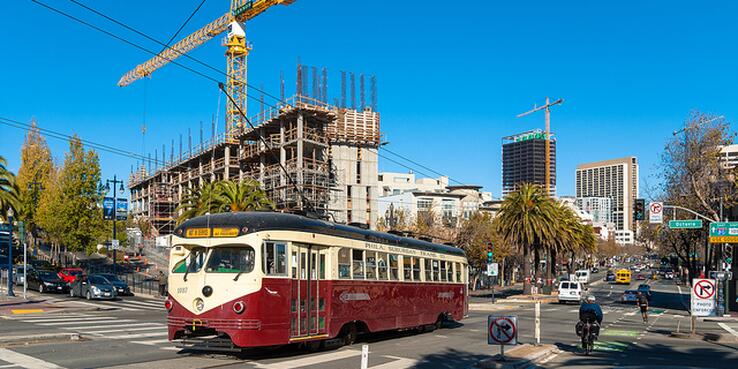Long before the current housing crisis, SPUR and partners like the SF Housing Action Coalition and Livable City advocated for better planning codes and practices in San Francisco. Paying attention to code may not be as headline-grabbing as placing a measure on the ballot, but it’s a key factor in shaping the course of a city’s development — and San Francisco has made some significant updates recently.
Planning and zoning codes are critical because they lay out the actual rules for how real estate development can take shape day to day. San Francisco’s code is long, detailed, unwieldy and often in conflict with itself. Many ideas for updating and improving it — shifting parking requirements and enabling secondary units, among others — have taken time to implement. It’s taken changing tastes and diligent work over the last decade to update and reform the planning code, one ordinance and one neighborhood at a time. Our friends at Livable City have been particularly unrelenting in their advocacy and work with city leaders and the Planning Department for better planning requirements. While the code changes aren’t glamorous, the cumulative effect of this detailed work is significant and will make a real difference for the city over the long term.
A few recent and ongoing highlights for you planning nerds out there:
- Despite San Francisco’s serious need for creative ways to add new housing, secondary units (an additional self-contained dwelling unit added to an existing residential building) were illegal until last year.. SPUR has long supported secondary unit construction as a strategy to incrementally add housing citywide while preserving existing neighborhood character. Last year, Supervisor Chiu’s ordinance to legalize existing units and Supervisor Wiener’s ordinance permitting new units in the Castro neighborhood were both approved by the Board of Supervisors. In 2015, Supervisor Wiener will sponsor legislation to expand the program for new secondary units to additional neighborhoods. He is also bringing legislation forward to permit new units in situations where an applicant is already performing city-required seismic improvements.
- Legislation reorganizing Article 2 of the Planning Code passed the Planning Commission late last year and will head to the Board of Supervisors soon. This is perhaps the wonkiest of these reform efforts and yet extremely important. This legislation better organizes the Planning Code and simplifies and streamlines the definitions of land uses from 316 possible uses to 115. To complete this major clean-up effort, there are two additional ordinances coming in 2015 that will tackle Articles 7 and 8. While they include few substantive changes to the code, these reorganization efforts will make it easier for citizens and real estate development practitioners to meaningfully participate in the planning and development process.
- A series of legislative efforts have tackled incremental changes to transit-oriented Neighborhood Commercial Districts, those within 1,000 feet of important transit streets or a transit center. Over the last few years, various ordinances have reduced parking requirements, removed density limits, given five-foot height bonuses to allow for tall ground floors that foster pedestrian activity, and allowed certain exceptions from planning requirements in order to facilitate better and more appropriate development in these key locations. In December, the Northeast Ordinance was approved, getting Chinatown and North Beach with the program. The next districts that hope to be blessed with some of these code changes include the Fillmore and Divisadero Neighborhood Commercial Districts. In many cases, these changes have become the accepted norm, and we look forward to seeing them implemented in new neighborhoods and refined and expanded where they already exist.
In the upcoming year, SPUR would like to see more neighborhood plans proposed and launched. The neighborhood planning process has proven to be a successful way to work with communities to determine the right level and right kind of development for an area. Currently, Central SoMa is the last and only neighborhood planning process underway or in the pipeline. Given the typical length of the process, it’s time to get started on more of these major endeavors. If we start now, it will be a decade before a new neighborhood plan will be completed.
In the meantime, the fine-grained planning reforms mentioned here are an important way to push forward more opportunities for housing and better development in general. They are already making a significant impact on the quantity and quality of development happening in San Francisco. We will continue to support these changes and push for better process and better code, so that more housing gets built and our city’s neighborhoods grow in the right way.
Learn more from Livable City >>
Read SPUR’s Agenda for Change >>
